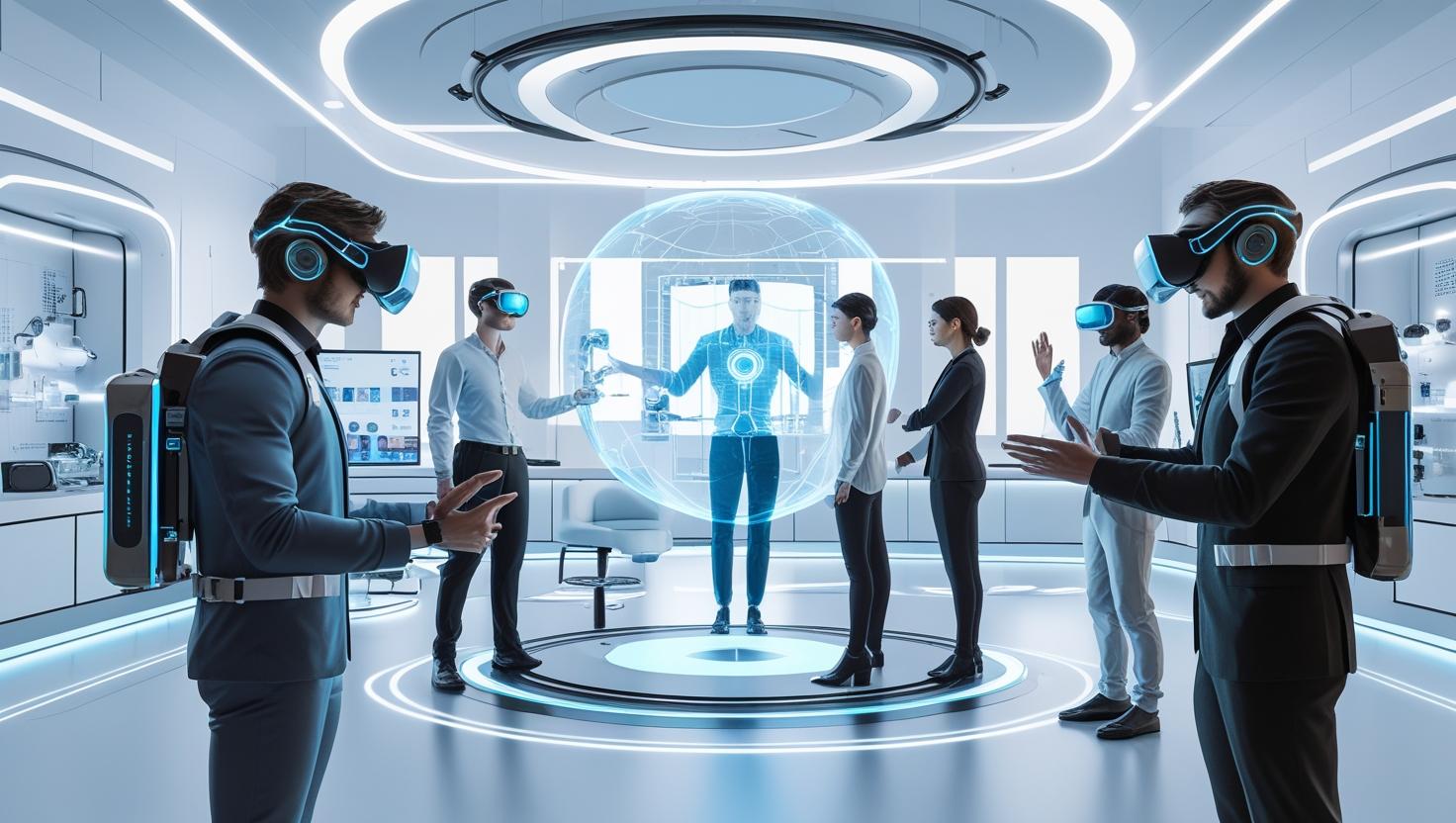Virtual Reality (VR) has evolved from a niche novelty into a transformative force within the entertainment industry. With advancements in hardware, software, and content creation, VR is enabling audiences to experience storytelling, gaming, concerts, sports, and interactive media in ways that were once unimaginable. As immersive experiences become more realistic and accessible, VR is redefining how audiences engage with entertainment. The convergence of high-performance computing, realistic graphics, intuitive controls, and connected ecosystems is driving innovation in VR and shaping the future of the global entertainment landscape.
Download PDF Brochure @ https://www.marketsandmarkets.com/pdfdownloadNew.asp?id=201528031

Rise of High-Fidelity Graphics and Realistic Environments
One of the most notable trends in VR entertainment is the push toward photorealistic visuals and hyper-detailed environments. Advances in GPU performance, real-time ray tracing, and high-resolution displays are allowing developers to create immersive worlds with lifelike textures, lighting, and physics. This level of visual fidelity enhances audience engagement by making experiences more believable and emotionally impactful. From cinematic VR storytelling to AAA VR games, the emphasis on realism is driving deeper immersion and user satisfaction.
Integration of Haptic Feedback and Sensory Immersion
Haptic feedback technology is adding a new dimension to VR entertainment by allowing users to physically feel interactions within virtual environments. Haptic gloves, suits, and controllers provide tactile sensations such as vibrations, pressure, and texture simulation, creating a more engaging and realistic experience. Beyond touch, innovations in sensory immersion—such as spatial audio, scent generators, and temperature variation—are being integrated into VR setups to deliver multi-sensory engagement. This trend is particularly influential in immersive gaming, virtual theme parks, and experiential marketing.
Expansion of Social VR Platforms
Social VR is emerging as a powerful trend in the entertainment industry, enabling users to connect, interact, and share experiences in virtual spaces. Platforms like VRChat, Horizon Worlds, and Rec Room allow people to attend virtual concerts, host watch parties, or explore shared environments with friends and strangers from around the globe. The rise of social VR is blurring the lines between gaming, social networking, and live entertainment, making it an essential tool for community-driven experiences. This is also opening up opportunities for virtual fan events, collaborative storytelling, and branded metaverse spaces.
Growth of VR in Live Events and Concert Experiences
VR is transforming how audiences experience live events such as concerts, sports matches, and theater performances. By streaming events in VR, users can enjoy front-row seats from the comfort of their homes, with the added ability to explore multiple viewing angles or interact with other attendees virtually. This trend is especially appealing to fans who cannot attend in person due to geographical or logistical constraints. Major music artists, sports leagues, and entertainment companies are embracing VR to reach global audiences and create hybrid event models that merge physical and virtual attendance.
Adoption of Wireless and Standalone VR Headsets
The shift from tethered VR systems to wireless and standalone headsets is making immersive entertainment more accessible and user-friendly. Standalone devices like the Meta Quest series, Pico headsets, and HTC Vive XR Elite offer built-in processing power, reducing the need for high-end PCs or gaming consoles. Wireless capabilities enhance mobility, making it easier for users to move freely within virtual environments without being restricted by cables. This convenience is accelerating VR adoption among casual users and mainstream audiences.
Integration of AI and Procedural Content Generation
Artificial intelligence is playing a growing role in VR entertainment by enabling procedural content generation, adaptive storytelling, and intelligent NPC (non-player character) behavior. AI algorithms can personalize experiences based on user actions, preferences, and emotional responses, creating unique and replayable VR content. This trend is particularly relevant for open-world VR games, interactive films, and VR training simulations, where dynamic content keeps audiences engaged for longer periods. AI-driven VR environments also enable faster content creation, reducing production costs for developers.
Cross-Platform and Mixed Reality Integration
As VR matures, there is a growing emphasis on interoperability with other immersive technologies such as Augmented Reality (AR) and Mixed Reality (MR). Cross-platform experiences allow VR users to interact with AR and MR participants in shared environments, creating hybrid experiences that blend physical and digital worlds. This integration expands creative possibilities for entertainment formats such as interactive theater, immersive education, and multi-platform gaming. The growing adoption of XR (Extended Reality) ecosystems is further encouraging cross-compatibility between devices and platforms.
Rise of Location-Based VR Entertainment
Location-based VR experiences, such as VR arcades, theme parks, and immersive exhibitions, are gaining popularity as social and group activities. These venues provide access to high-end VR setups, large-scale motion tracking systems, and specialized equipment that may be too costly for home use. Location-based VR entertainment is particularly effective for experiential marketing campaigns, tourism attractions, and branded entertainment, offering unique and memorable experiences that cannot be replicated in home environments.
Monetization through VR Subscriptions and In-App Purchases
The entertainment industry is increasingly exploring monetization models for VR, including subscription-based content libraries, in-app purchases, and virtual goods. Platforms are offering premium VR experiences, exclusive events, and cosmetic upgrades to enhance engagement and generate recurring revenue. The growth of VR marketplaces is also enabling independent creators to distribute and monetize their own immersive experiences, fostering a diverse and competitive content ecosystem.
Explore In-Depth Semiconductor & Electronics Market Research – https://www.marketsandmarkets.com/semiconductorand-electonics-market-research-87.html
See Related Semiconductor Reports:
Augmented Reality Market Size, Share & Industry Growth Analysis Report by Product by Device Type (Head-mounted Display, Head-up Display), Offering (Hardware, Software), Application (Consumer, Commercial, Healthcare), Technology, and Geography – Global Forecast to 2026
Augmented and Virtual Reality Market by Enterprise, Technology (Augmented Reality, Virtual Reality), Offering (Hardware, Software), Device Type (HMDs, HUDs, Gesture Tracking Devices), Application and Region – Global Forecast to 2029
